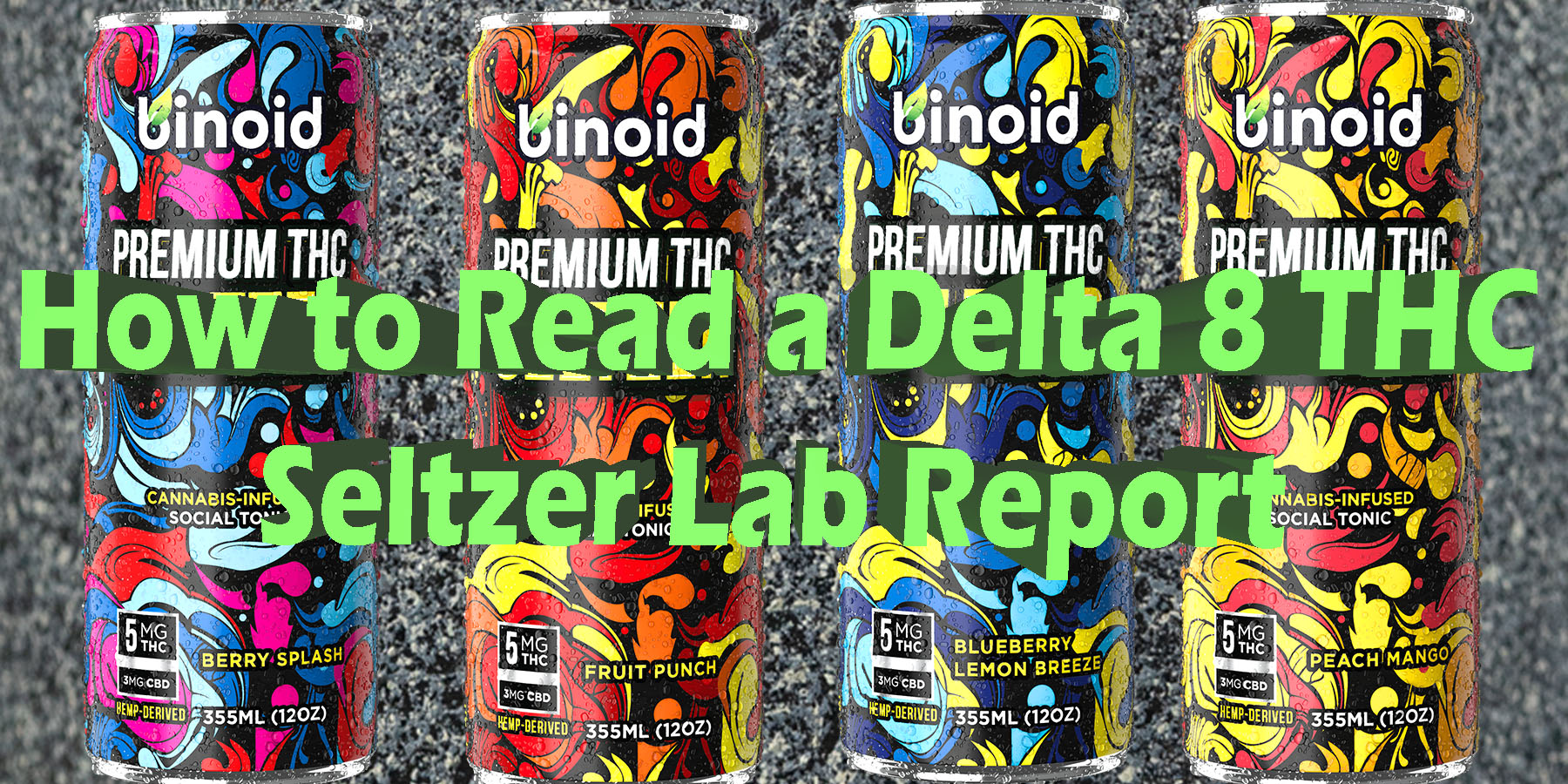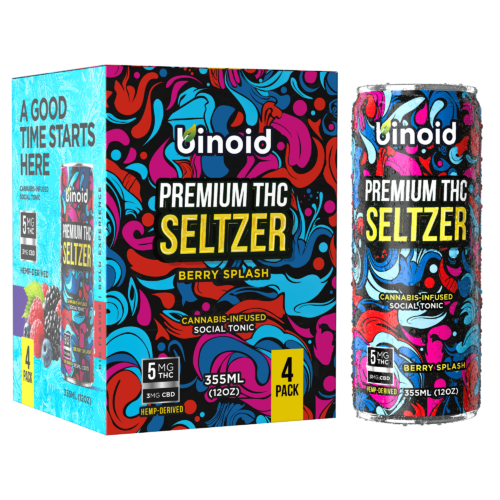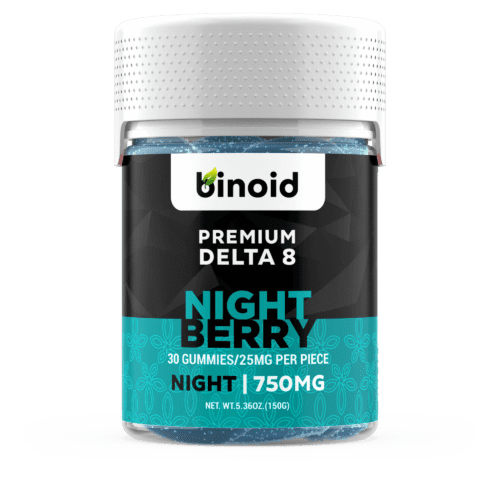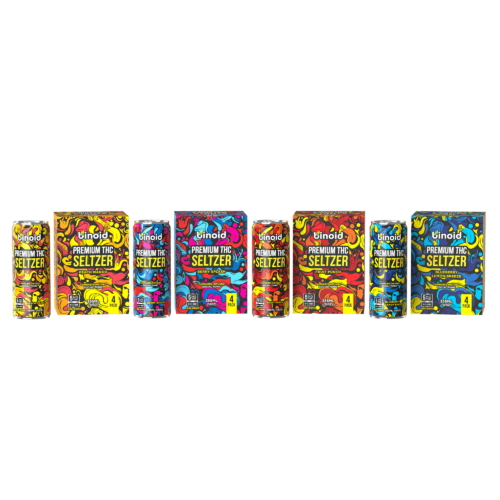In the ever-expanding universe of modern beverages, a new constellation of products is shining with particular intensity, drawing in consumers with the promise of a crisp, refreshing, and uniquely mellow experience. Delta 8 THC seltzers have gracefully maneuvered into the spotlight, offering a legal and more accessible alternative for those seeking relaxation and a gentle lift. Yet, beneath the sleek can designs and enticing flavor profiles lies a more complex narrative—a story of chemical artistry, regulatory navigation, and product purity.
This story isn’t told through clever marketing, but through a scientific document that has become the single most important tool for any discerning consumer. This document is your key to developing a kind of x-ray vision, allowing you to see past the label and into the very molecular makeup of your drink. Learning to interpret it is the skill that separates hopeful consumption from confident enjoyment, ensuring the functional, clear-headed bliss you seek is built upon an unwavering foundation of safety, transparency, and scientific proof.
To Buy Delta 8 THC Seltzers Click Here
Recommended products
What’s a Certificate of Analysis (COA) and Why is It Your Go-To?
Before we start examining the evidence, let’s establish exactly what a Certificate of Analysis (COA) is and why it holds a position of supreme importance in the world of hemp-derived products, especially Delta 8 THC seltzers. A COA is an official report generated by an accredited scientific laboratory that has conducted a thorough analysis of a sample from a specific production run of a product. Its core function is to deliver a complete and unbiased chemical breakdown, verifying the product’s potency, confirming its cannabinoid profile, and, most critically, ensuring its purity from a wide range of potential contaminants.
You can think of it as an investigator’s case file for your seltzer—it contains the product’s identity, a list of known associates (the cannabinoids), and a full background check to prove it has a clean record. The COA represents a fundamental paradigm shift in consumer power, moving away from a dated model of brand promises and toward a modern standard of verifiable, data-driven proof. The entire system of trust hinges on one critical component: the analysis must be performed by an independent, third-party laboratory. This isn’t just industry jargon; it is the bedrock of the document’s integrity. A third-party lab has absolutely no financial stake in the success of the Delta 8 seltzer brand it is testing. The lab’s singular mission is to apply rigorous scientific methods to the sample and report the findings with objective accuracy, whatever they may be.
This crucial independence eliminates any potential for a conflict of interest and guarantees that the results are untainted by bias. When a company voluntarily invests the significant resources required for comprehensive third-party testing, it sends a powerful message that they have complete confidence in their manufacturing process and are wholly committed to consumer transparency. While some states mandate basic testing, the most reputable brands consistently go far beyond these minimums, screening for a more extensive list of compounds and making these reports effortlessly accessible. This dedication to transparency is the hallmark of a premier brand that respects its customers’ right to be fully informed.
For any trustworthy Delta 8 THC seltzer company, ensuring customers can easily access a COA is a point of operational pride and a non-negotiable aspect of their business model. The most common and convenient method for this is a QR code printed directly on the can or its outer packaging. This small, scannable square acts as an instant portal, linking you directly to the precise lab report for the very batch you are holding in your hand. This technology has become the industry standard, making radical transparency not just a theoretical possibility but a baseline expectation for consumers.
It’s vital to understand that every single production run—known as a batch or lot—receives its own unique test and corresponding COA. Even with a perfected recipe, minute variations in the hemp-derived starting material or the isomerization process can cause slight differences in potency or purity. A batch-specific COA is the only way to be certain that the can in your hand is both safe and accurately dosed. Any brand that makes finding this information difficult, or fails to provide it at all, should be viewed as a major red flag and avoided.
The Anatomy of a Delta 8 THC Seltzer Lab Report – A Section-by-Section Guide
Approaching a COA for the first time can feel like looking at a complex schematic, but with a little guidance, you can learn to read it like a seasoned inspector. This document serves as your seltzer’s official dossier, telling you its identity, its active ingredients, and, most critically for Delta 8, confirming that it’s free from unwanted byproducts and contaminants. Let’s conduct a detailed inspection of a typical report, section by section.
Header Information: Confirming the Basics
The top section of the report contains the fundamental data that links the document to the physical product. Before delving into the scientific results, your first step as an investigator is to verify these foundational details.
Product and Brand Name: This section should clearly identify the specific product name, such as “Mango Tango Delta 8 THC Seltzer,” as well as the name of the parent company that produced it.
Batch Number or Lot Number: This is an indispensable piece of evidence for ensuring traceability and consistency. Manufacturers produce seltzers in large, distinct quantities known as batches or lots. This unique alphanumeric code identifies the exact production run that your specific can belongs to. It is the critical link in the chain of custody from the lab to your hand. If you discover a seltzer with effects you particularly enjoy, you can seek out the same batch number to replicate that experience as closely as possible. More importantly, in the unlikely event of a product recall due to a safety concern, this number enables the company to pinpoint and remove the affected products with speed and precision. Always ensure the batch number on the COA perfectly matches the one printed on the bottom of your can.
Laboratory Information: The report must prominently display the identity of the laboratory that conducted the analysis. Look for the lab’s name, physical address, and official contact information. The single most important detail in this section is the lab’s accreditation status. The global gold standard for analytical and calibration laboratories is ISO/IEC 17025 accreditation. This is not a simple certificate of participation; it is a rigorous, ongoing certification that confirms a lab’s technical competence, methodological integrity, and operational consistency. An ISO-accredited lab is subject to regular audits by an independent governing body, uses scientifically validated methods proven to yield accurate results, and must successfully participate in proficiency testing programs. A COA from an ISO/IEC 17025 accredited lab provides the highest possible degree of confidence in the reported data.
Recommended products
Cannabinoid Profile & Potency: The Main Event
This is the section that deciphers the active ingredients responsible for the seltzer’s effects. For a Delta 8 product, this analysis is a two-part mission: verifying the intended dose of Delta 8 THC and ensuring the product is legally compliant by checking the level of Delta 9 THC. Let’s break it down here:
Delta-8-THC (Δ8-THC): This is the star of the show and the primary active ingredient. The COA will list the amount of Delta 8 THC in milligrams (mg) per serving or per can. This number is your dose. Common dosages for Delta 8 seltzers range from 5mg to 25mg per can. Understanding this value is the key to managing your experience and aligning it with your tolerance and desired outcome.
Delta-9-THC (Δ9-THC): This value is arguably just as important as the Delta 8 content. For a Delta 8 product to be federally legal under the 2018 Farm Bill, it must be derived from hemp and contain no more than 0.3% Delta 9 THC by dry weight. A legitimate lab report will clearly show the amount of Delta 9 THC. You must verify that this number is below the legal limit. A “Pass” in this section, or a result of “ND” (Not Detected) or “<LOQ” (Below Limit of Quantitation), confirms the product’s legal compliance.
THCA (Tetrahydrocannabinolic Acid): You might see this cannabinoid listed, but for any finished Delta 8 product, the value should be zero or extremely close to it. THCA is the non-psychoactive precursor found in raw cannabis. Since Delta 8 is created through a chemical conversion process from CBD, and not by heating raw cannabis flower, there should be no significant amount of THCA present.
CBD (Cannabidiol): While the star is Delta 8, many seltzers are formulated with CBD to create a more balanced and mellow experience. CBD is non-psychoactive and is known for its calming properties, which can smooth out the psychoactive effects of THC for a more rounded feeling. The COA will list the precise amount of CBD in mg, allowing brands to create specific ratios. A 1:1 ratio of Delta 8 to CBD, for instance, is often sought for a harmonious effect that balances the gentle buzz with deep relaxation.
Minor Cannabinoids: The chemical process that converts CBD into Delta 8 isn’t always perfect and can create other minor cannabinoids in the process. A good COA will list these as well. You might see small amounts of CBN (Cannabinol), which is associated with relaxing and sleepy effects, or CBG (Cannabigerol), which users often link to a sense of focus. While sometimes included intentionally, their presence can also be an indicator of the specific conversion process used.
Terpene Profile: The Architects of Aroma and Nuance
While the cannabinoid profile tells you the primary active ingredients, the terpene profile can provide clues about the seltzer’s more subtle characteristics. Terpenes are the aromatic compounds responsible for the scents of plants like pine, lavender, and lemon. In cannabis, they are believed to work synergistically with cannabinoids to shape the overall experience, a theory known as the “entourage effect.”
In the world of Delta 8 seltzers, terpenes are typically added back into the product after the Delta 8 oil has been produced and refined. This is because the chemical processes used to create Delta 8 often destroy the natural terpenes of the original hemp plant. Brands will use either botanically-derived terpenes (from other plants) or cannabis-derived terpenes to craft a specific mood or flavor profile:
Limonene: A bright, citrusy terpene often associated with an uplifting mood.
Myrcene: An earthy, fruity terpene often linked to calming effects.
Linalool: A floral, lavender-scented terpene prized for its tranquil qualities.
Beta-Caryophyllene: A spicy, peppery terpene also found in black pepper, associated with soothing feelings.
Pinene: A sharp, pine-scented terpene that some users associate with alertness.
Recommended products
The Safety Section: Your Assurance of Purity
This section of the lab report is, without question, the most important for any Delta 8 consumer. A seltzer can have the perfect dose of Delta 8, but that is irrelevant if the product is not safe to consume. This is where the lab screens for a host of potential contaminants. Because Delta 8 is created through a chemical process, the risk of contamination from residual solvents or unwanted byproducts is higher than with naturally extracted products.
Seeing a “Pass” in every category of a full safety panel is non-negotiable. The best possible result is “ND” (Not Detected) or “<LOQ” (Below Limit of Quantitation), which means the concentration of a contaminant is so low that the lab’s equipment cannot even reliably detect it. Breaking these down further here:
Pesticide Testing: Hemp plants can absorb chemicals from their environment. This panel tests for dozens of specific agricultural pesticides to ensure they are not present in the final product and that you are not consuming harmful chemicals.
Heavy Metals Analysis: This analysis screens for dangerous heavy metals like lead, arsenic, mercury, and cadmium, which can be absorbed by the plant from contaminated soil or water. This test is the ultimate proof of the cultivator’s diligence in sourcing their hemp.
Microbial Contaminants: This is an especially critical test for any beverage. The lab screens for harmful microorganisms like Salmonella, E. coli, and mold. This test verifies that the canning facility’s food safety and sanitation procedures were effective and the product is sterile.
Mycotoxin Testing: Mycotoxins are toxic compounds produced by certain types of mold. This test specifically looks for harmful mycotoxins like Aflatoxins to ensure the product is free from these dangerous fungal byproducts.
Residual Solvents: This test is exceptionally important for Delta 8 products. The process to convert CBD to Delta 8 THC often involves the use of acids, reagents, and solvents. This panel ensures that no harmful levels of these chemicals remain in the final, purified Delta 8 oil that is infused into your seltzer. A “Pass” here is your assurance that the purification process was successful.
Long and Short Lab Reports
As you investigate COAs, you will encounter two distinct types: long reports and short reports. Understanding the profound difference between them is vital, as the type of report a brand chooses to provide speaks volumes about its commitment to safety and quality.
The Short Report (Potency-Only): This is the most basic form of a COA. It provides only a summary of the cannabinoid profile, showing the levels of Delta 8 THC, Delta 9 THC, and perhaps CBD. While this information is useful, the report stops there, providing no safety data whatsoever. A potency-only test is much cheaper and faster for a brand to acquire. While it has a place for internal checks during production, presenting this limited report to a consumer as the final proof of quality is a significant red flag, especially for a Delta 8 product.
The Long Report (Full-Panel): This is the gold standard and the only type of report a discerning consumer should accept. A full-panel COA includes the complete cannabinoid and potency profile plus the entire battery of safety tests: pesticides, heavy metals, microbial contaminants, mycotoxins, and residual solvents. This comprehensive document provides the complete picture and is the definitive proof that a brand has invested fully in its quality control and is willing to stand behind the absolute purity of its product. For Delta 8, accepting anything less than a full-panel report is an unnecessary risk.
Putting It All Together: A Final Checklist
With the components of a Delta 8 COA now demystified, it’s time to consolidate this knowledge into a practical mental checklist. The wealth of data on a lab report can be distilled into four critical checkpoints. Think of this as your final inspection protocol to perform every time you scan a seltzer’s QR code. This quick process is what elevates you from a casual user to an empowered investigator:
Match the Batch: Does the batch or lot number on the COA perfectly match the one printed on your can?
Verify the Lab: Is the testing laboratory clearly identified, and is it ISO/IEC 17025 accredited?
Check the Dose & Compliance: What is the exact amount of Delta 8 THC in mg? Crucially, is the Delta 9 THC level below the 0.3% legal limit?
Demand the Full Panel: Is this a complete, long-form report that includes all safety tests? Has the product received a definitive “Pass” in every single safety category, especially residual solvents?
You’re the Empowered Consumer Now!
The emergence of Delta 8 THC seltzers has unlocked a wonderfully sophisticated and accessible new way to enjoy the pleasant effects of cannabis. These beverages offer a light, functional, and smoke-free option that is perfectly suited for a vast array of modern lifestyles. Your journey with them should be one of confident discovery, completely free from the uncertainty of what’s inside the can. The Certificate of Analysis is your key to achieving that confidence. It transforms the relationship between brand and consumer into a partnership built on scientific proof and transparency. The next time you consider a Delta 8 seltzer, take that extra moment to become an investigator.






